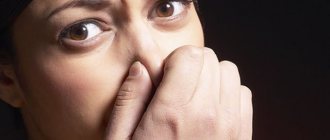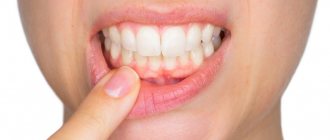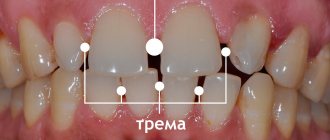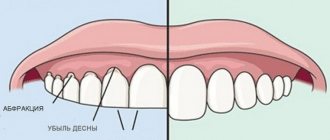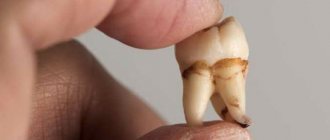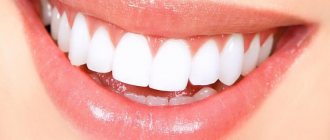Probably every person on earth at least once in their life has encountered a situation where their teeth are chattering due to hypothermia or severe stress. This is a completely natural process, it occurs only in certain situations, and, as a rule, does not cause any fear or anxiety in a person.
It’s a completely different matter if teeth chattering appears regularly and without any reason and begins to cause discomfort. In such cases, you should not hesitate to go to the doctor, because such an unnatural condition predisposes to the appearance of some dangerous dental diseases.
The concept of bruxism and the reasons for its development
Bruxism is classified as a psychological disorder, but may also have physical causes.
Symptoms include involuntary teeth grinding. If left untreated, bruxism can cause serious health problems. Bruxism is sometimes classified as a psychological problem, as the most common cause is known to be an inability to cope with stress.
However, recent research suggests that this disorder may be caused by malocclusion or even diseases of the nervous system. People in high positions at work often suffer from bruxism due to stress. In addition, bruxism is more common in women than in men.
Symptoms of Bruxism
All video presentations
A person with bruxism involuntarily grinds his teeth:
- If the cutting is observed during the day, it is called daytime bruxism,
- if at night, they speak, accordingly, about night bruxism.
Individuals suffering from bruxism often have problems relating to those with whom they sleep in the same bed or live in the same room because the symptoms prevent others from sleeping. Negative attitudes toward someone with bruxism create a vicious cycle, placing the person under even more stress, which only makes the symptoms worse.
Consequences
Teeth chattering in your sleep is a negative phenomenon that wakes up not only loved ones at night, but also harms the person himself. Constant pressure causes teeth to suffer. They become shaky and fall out gradually, the enamel wears off and constant pain occurs.
Bruxism negatively affects those who wear orthotics. The teeth experience double pressure from the structure itself and from the pressure. In addition, the grinding noise causes rapid wear of the structure.
Bruxism can lead to stress, depression and fatigue.
Causes of involuntary teeth grinding
The most common and direct cause of the disease is considered to be excessive stress. People who cannot cope with it suppress stress during the day, and at night it makes itself felt through teeth grinding. From a psychological point of view, the cause of the disease may be agoraphobia, or fear of open spaces. Somatic causes include poor-quality dental fillings, malocclusion, diseases of the nervous system and hereditary predisposition.
Treatment of bruxism
Typically, this disorder is treated with sedatives. But such treatment rarely brings the desired result. In this case, the mechanical method is well suited, namely, the doctor may suggest a dental guard (mouth guard) that will prevent grinding. These overlays are usually made transparent. When the cause of the problem is a malocclusion, the orthodontist can straighten it through dental treatment. However, at the beginning of treatment, psychologists recommend stopping being nervous, because if the patient is constantly in a state of stress, the treatment will not have any noticeable effect.
In any case, you don’t have to put up with the disease; if you identify symptoms, contact the orthodontic department of A.Dent Dentistry, where doctors will consult with you and will be able to help you in the fight against such a disease as teeth grinding (bruxism).
The puppy bites his hands and snaps his teeth like a crocodile
I receive letters, thanks to which the Puppy Guide is constantly updated. I'm glad you follow the Guide's recommendations. Now let’s figure out what went wrong: “We are trying to follow the method you described in “Educational Measures in the First Week” - we are already calmly wearing a cloth collar and a rope in our presence, but leash restraint measures are not working. The puppy falls to the floor, spins around like a top, breaks out of the collar and gets up and continues to bite and gnaw.” It looks very unpleasant, but you shouldn’t be scared. Hold the rope at such a distance that the puppy cannot bite you, wait. Wait. Wait. Give the puppy time to calm down. When he turns around, bites the rope, maybe even grumbles, he will see that all these actions do not lead to success, they won’t let him off the rope, they won’t let him bite his hands. He will sit down and think - at this moment you can praise him. A few more of these bursts and everything will go well... if the only reason is that you were frightened by the puppy’s resistance to the rope and you gave up ahead of time.
Some puppies bite their hands not because they are playing, but because, having started to play, they get scared and begin to defend themselves, not to snap back, but to “bite off,” as it were. That is, they are not just cheerful playful puppies, there is an element of fear, anxiety, and mistrust in their behavior. In this case, what happens is what is described further in the letter:
“In general, the puppy gets quite used to us, he likes to come and sleep next to us during the day with his head on his leg, but when he wakes up, he bites, and when you hold him, he clicks his teeth like a crocodile. It seems that for her this is the only option for communication; she doesn’t even lick her hand, she just bites her. He still doesn’t seem to understand the words “no”, “excellent” and encouragement. Of course, we are full of patience and in no case do we shout, scold, or spank, but “no no no” doesn’t work yet. What are we doing wrong?
1) Anything that runs away from a puppy is perceived as prey. If the puppy, having grabbed your arm or leg, feels that the arm or leg comes to life and moves, then he will perceive this as encouragement and try to grab and hold it stronger. But how can you not pull your hand away when the puppy grabs so painfully with his sharp milk teeth? It’s very simple - when you are going to tinker with it and communicate with it, wear gloves and a thick shirt. Don’t think that you will have to do this for the next 15 years of your dog, but don’t ignore this advice either - this way you can calmly work with puppies without screaming or getting upset (and without scaring your household and co-workers with scratches and bruises on your limbs).
2) A large part of this puppy behavior is his distrust of you. It goes away over time if you do it correctly. Here in the video, I teach a 4-month-old Parson Russell Terrier puppy to trim his nails. Notice that I touch his paw with tweezers, praise and encourage him. This is about learning to trust first and foremost, not just to trim nails. And - yes - my dear Russell was also a fan of chattering his teeth. But when he realized that after the word “excellent!” give a treat, switched from “game mode” to “treat mode”.
3) Because the puppy bites painfully, your arms are tense. Tense hands make it more difficult for a puppy to relax. Learn to hold your puppy in such a way that he cannot bite you. To do this, grab him by the collar at the withers with one hand (you can, together with the skin - but carefully, so as to hold him tightly, but not hurt), and with the other, under his butt or tummy. If the puppy is a large dog, sit on the floor and hold the puppy by the neck from above, on both sides of the collar, putting one of your fingers under the collar. It's like you're hugging his neck. Try to feel the measure! You should not squeeze the puppy's neck or lift it by the withers - this will only scare it. In the first case, the puppy rests its paws on your hand, in the second - on the floor. Your hands hold the puppy's neck and head, because this way he can't bite them. In principle, if you have covered your hands well or are not afraid of the puppy’s prickly teeth, then you can hold him by the shoulders or body, as long as both you and him feel comfortable. The puppy will immediately try to fall on his back - don’t let him, you don’t need his submission, but his calm behavior in your hands. While the puppy resists, hold tightly and don’t let go. Resistance always comes in waves. In a minute or a minute and a half (or even earlier), the puppy will stop fidgeting and chattering his teeth (and if he grabs you by the hand, it’s also not scary, you’re wearing gloves and sleeves). As soon as the puppy calms down, relax your hands, but do not let go of the puppy. Praise him. Typically the puppy will resist a few more times and then subside a few times. Each time the flash will be weaker. He needs repetition at least 3-4 times (and with stubborn dogs - twice as much) to understand: “if he resists, he is held, if he is relaxed, his hands are also relaxed.” Release the puppy only when he has stopped resisting, do not let him jump out of your hands - he will think that he must break free, bite in order to free himself. This way he won't learn to trust.
Many people have a very difficult time squeezing their hands. Imagine that you are juggling chicken eggs. You need to catch the egg and grab it tightly, but not crush it. Your fingers are like a net, they don’t let go, but they don’t squeeze either.
4) When you are trying to switch your puppy to a toy, watch out for this subtlety: as soon as the puppy grabs the toy in its teeth, it should begin to move. Only then can you make it more interesting than your hands.
5) Psychological moment. Almost every puppy can exhibit
This kind of “biting” occurs at the age of about 3 months, but in many puppies it is overcome very quickly, while in others - and also many - it lingers until 5-6 months. At first, I looked for reasons in the characteristics of the puppy’s origin or his early experiences (more on that below), but then I came across an amazing thing. Many owners find it difficult to stop their puppy from biting because they feel guilty. They feel like they are not good enough bosses, or that they spend too much time at work, or they are afraid that they will do something wrong and allow themselves to be “eat” without trying to defend themselves.
Remember: under no circumstances are you obligated to tolerate being bitten. The main duty of your pet is to be your friend, and friends - even of the dog tribe - do not bite friends, causing them pain.
6) Very large dog/weak owner. Some dogs are really difficult to handle. This happens not only with large dogs, but also with small ones, if the owner is a gentle person or, due to age or health, cannot resist the puppy’s biting games that have gone too far. Here we are already talking about puppies aged 5-6 months, which could not be weaned from biting at 3 months. In this case, you need to remember that next to the owner the dog behaves more excitedly; it considers your resistance to be a continuation of the game. You push the dog, it pushes you, you grab it, it bites you. The solution to this problem is very simple - you need a “shield”. For example, a badminton racket or a bag in which you can put a folder so that it does not lose its shape, or a large thick bag. Place the shield in front of you so as not to let the dog get too close, keep a distance of about a meter between you and the dog. Tell your dog to “Sit!” or at least “Stop!” - if she doesn’t already know the commands. This will make her pay attention to your face. By staying at a distance, your dog can see your body language and respond by being calmer. You can see the same thing on walks. An excited puppy bursts into the midst of dogs and rushes to play with one of them - they immediately snap at him. After a while, he learns to stop at a short distance and slow down when approaching, to fall on his front paws to offer play, and only then to play.
7) “The puppy jumps up when you lean towards him and tries to grab my face with his teeth, so my lip and cheek are already bitten.” As puppies grow older, they begin to lick the lips of the mother dog, in response to which the mother reflexively regurgitates food for them. Puppies digest the semi-digested lump better, and at the same time switch to eating solid food. The desire to lick the lips of relatives easily transfers to the owner who cares for the puppy. But, when overexcited, puppies not only lick their lips, but also bite their cheeks - both dogs and people. The best way to wean yourself off it is to not allow it to happen. Hold the puppy if you need to bend over it, do not let it get close when you do something, with your head down. Typically, the puppy's desire to grab a person's lip or cheek goes away after a few weeks. For some - and these are usually dogs with strong hunting instincts, who generally tend to catch and grab everything that runs away from them - this unpleasant feature persists for up to a little over a year. You can prohibit, swear, pull the dog away, but the main thing is still avoidance - to simply prevent the dog from doing this. A blow to the nose often causes the puppy to bite the hand in response, trying to turn everything into a game, or to become frightened by the owner, but still not understand why he was punished. At least, when the owner begins to stroke and praise the previously punished puppy, he can begin to lick and grab the person’s face again. It’s like: “after punishment, you can’t lick your face or bite me, but if they praise me, then you can do both.”
And a few words about dogs' predispositions . The most biting puppies (not angry ones, but playfully biting ones) are those that do not tolerate familiarity. They feel nervous about being touched, hugged, or restrained. Individual distance is very important for them. Most often, these are dogs of “wild” breeds (like Basenji, Laikas, Huskies), highly excitable breeds (Russells, Scotch Dogs, Cairn Terriers, Dachshunds) or puppies born in an enclosure, which breeders have rarely taken into their hands. It is important for owners to understand this feature of the puppy. You can wean him from biting, but for a long time he will still get tired of close contact with you (hugs, stroking). Don't overtire him with affection, but at the same time be persistent. Reward him for lying next to him and allowing himself to be stroked, do not pursue him if he has gone to his place. If the dog is small, teach it to sit on your hands for a treat. Usually within a few months the puppy becomes quite “tame”, but he usually begins to truly love affection (if the owner treats him correctly) at about 1.5-2 years.
